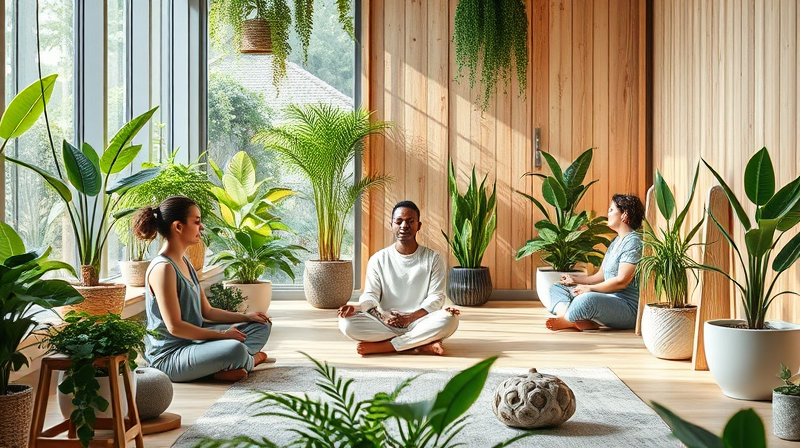In today's fast-paced world, creating a daily rhythm that nurtures both body and mind can be a challenge. However, cultivating a balanced routine is essential for long-term health and emotional resilience. Recent research has shown that it is not only what we do during the day that counts, but also when and how consistently we do it.
As we explore the relationship between our natural circadian rhythms and daily habits, it becomes clear that the timing of our activities plays a crucial role in enhancing physical and mental well-being. Whether it’s the way we plan our meals, our sleep schedule, or the time we choose for exercise, every action can contribute to an overall sense of balance and vitality.
The Science Behind Daily Rhythms
At the heart of our well-being lies our internal biological clock. Circadian rhythms, as these regular cycles are known, control critical processes including sleep-wake cycles, metabolism, and mood fluctuations throughout the day. These rhythms are not merely peripheral phenomena; they are fundamental drivers of health.
Studies suggest that aligning our daily activities with our natural body clocks can significantly impact our physical health. For instance, research has indicated that older adults who maintain consistent and early daily patterns tend to show improved cardiorespiratory fitness and walking efficiency. This is just one clue that a structured daily routine might facilitate a more balanced and proactive approach to aging.
Often described as the body's internal metronome, the circadian system challenges us to think differently about daily planning—beyond the simple notion of 'to do' lists. Instead, it pushes us to consider the when alongside the what of our everyday actions.
Nurturing Mental Health Through Consistency
Mental health is profoundly intertwined with our physical routines. Many experts argue that the steadiness of our daily rhythm can act as an anchor for mood stability. Anxiety and depression can sometimes manifest more strongly at certain times of the day, and awareness of these patterns enables us to manage them more effectively.
One promising strategy involves matching daily activities to one’s natural energy peaks. Prioritizing natural light exposure in the morning, for example, helps recalibrate our internal clocks, supporting both better sleep and improved mood. Similarly, making time for mindful minutes amid busy schedules can bring a sense of calm and balance.
Consistent routines also pave the way for optimized mental performance. Knowing that a structured activity awaits, whether it’s work-related tasks or leisure pursuits, can reduce stress and anxiety. With each carefully planned moment, we build a lifestyle that is resilient, supportive, and health-focused.
Practical Strategies for a Balanced Daily Rhythm
Implementing sustainable daily changes can start with a few simple steps. The journey to improved physical and mental well-being is built upon small adjustments that, over time, make a powerful impact. Here are a few practical strategies:
- Consistent Sleep Schedule: Establish a regular bedtime and wake-up time, and embrace a soothing nighttime routine such as reading or meditation to help signal to your body that it is time to wind down.
- Exposure to Morning Light: Step outside soon after waking to absorb natural light. This simple act can boost mood, adjust your internal clock, and prepare your body for the day ahead.
- Timed Meals: Eating at consistent intervals supports your metabolism and reinforces the structure of your day. Plan your meals as anchors that guide the pace of your daily routine.
- Incorporating Breaks: Break away from prolonged periods of work with mindful pauses. Engaging in stretching exercises, walking, or even a brief dance session resets both body and mind.
- Intentional Social and Creative Engagement: Dedicate time to activities that stimulate your creativity or reconnect you socially. Whether it’s a casual conversation or a creative hobby, these moments of joy can enhance overall balance.
Even minor tweaks, such as reducing screen time before bed or adjusting the timing of a workout session, can yield significant benefits. Rather than overhauling your entire day, focus on integrating small, meaningful changes that align with your natural rhythm.
For those experimenting with various routines, it might be helpful to jot down observations regarding energy levels and mood fluctuations. Over time, patterns may emerge that can inform further adjustments, ultimately leading to a routine that is both natural and enriching.
Remember, designing your daily rhythm is not about imposing a rigid structure upon your life. It is about understanding and respecting the signals your body sends and embracing a routine that supports your unique needs. Embracing consistency in your daily habits is a step towards a healthier, more balanced life.
As research continues to illuminate the connection between our daily activities and well-being, there has never been a better time to make thoughtful adjustments to your day. By recognizing the role of circadian rhythms and committing to a balanced routine, you are not only investing in your immediate health but also shaping a resilient future filled with energy, positivity, and a deep sense of satisfaction.
Together, let us embrace the challenge of creating a day-to-day pattern that sensitively responds to our body’s needs, celebrates its potential, and upholds the timeless wisdom of balancing work, rest, and recreation.








